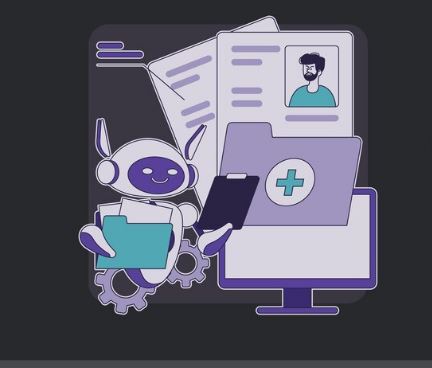The need for tools that can swiftly glean important insights from long documents has increased dramatically in the era of information overload. At the vanguard of this revolution are AI-powered PDF summarizers, which enable users to quickly and easily distill lengthy PDF files into readable summaries. For professionals, students, and anybody else wishing to glean the most important information from research papers, reports, or other long documents, the promise of saving significant time while maintaining the substance of the content is an alluring one.
The amount of work needed to comprehend complicated documents has been greatly decreased by AI PDF summarization tools. These tools provide a simplified solution whether you are a business professional looking through industry reports, a student navigating through thick academic papers, or a casual reader attempting to understand a technical manual. These tools are able to comprehend, interpret, and summarize documents with remarkable accuracy thanks to the use of artificial intelligence, specifically Natural Language Processing (NLP). These AI systems can produce summaries that emphasize the most important points without sacrificing the spirit of the original material by going through the text and identifying the most important passages.
Table for AI PDF Summarizer Information:
| Feature | Details |
|---|---|
| Technology Used | Natural Language Processing (NLP) |
| Primary Function | Condense long PDF documents into concise summaries |
| Common Users | Students, professionals, casual readers |
| Pay Rates | Free or subscription-based, depending on the tool |
| Supported Formats | PDF, Word, Excel, PPT, and other document types |
| Advantages | Time-saving, easy-to-understand summaries |
| Limitations | Misses nuances, struggles with complex layouts or visual content |
| Popular Tools | Smallpdf, NoteGPT, Sharly AI, Knowt |
| Pricing Model | Free with limited features, premium plans for additional functionality |
| Website | Smallpdf |
The ability of AI PDF summarizers to adjust to various content types is one of their most impressive features. For instance, a business report or a literary work will be handled differently than a scientific research paper that is full of technical jargon. The AI is able to examine the document’s structure, extract the most important information, and present it in a condensed format while maintaining its original meaning. Because of their adaptability, AI summarizers are especially helpful for users who frequently interact with a wide range of documents.
But even though the technology is unquestionably strong, it has drawbacks. The ability of AI PDF summarizers to accurately convey the subtleties and complexity of particular documents is one of the main issues. Although these tools are excellent at highlighting important details and presenting them succinctly, they might overlook minute details or fall short in capturing the original text’s tone. For academic or legal documents, where every word and context counts, this can be especially troublesome. An AI summarizer, for instance, might not fully understand a complex argument made in a long legal brief, which could result in the loss of important information.
These tools’ dependence on the document’s formatting presents another difficulty. The AI might have trouble correctly extracting the main points from a PDF file that is badly formatted, packed with extraneous information, or includes images and tables. Even though AI systems are getting better at managing intricate layouts, they still struggle to understand visual data like charts and graphs. As a result, users should be cautious when using these tools exclusively for documents with a lot of visual content.
Notwithstanding these drawbacks, AI PDF summarizers are a priceless resource for people who want to process vast amounts of information more quickly and efficiently. They give students a quick way to understand textbooks and research papers, which makes study sessions more productive. The ability to skim market analyses, industry reports, and legal documents without having to read every word is advantageous for professionals. In fast-paced settings where time is of the essence, this enhanced productivity is especially helpful.
It is anticipated that these tools will become even more accurate and efficient as AI PDF summarizer technology advances. More sophisticated machine learning algorithms will probably enhance their comprehension of complex content, decreasing the likelihood that crucial information will be overlooked. Additionally, the summaries produced by AI will be more thorough and accurate representations of the original text’s meaning as it improves its comprehension of context and subtleties.
With the speed at which AI is developing, PDF summarization appears to have a very bright future. AI PDF summarizers can be a huge productivity and efficiency boost for people who frequently work with large amounts of text. Additionally, as the technology becomes more widely available and reasonably priced, it might be widely adopted in a variety of industries, including business, education, and legal services.
Artificial intelligence PDF summarizers have the potential to be especially revolutionary in educational settings. Students can stay ahead of their coursework without feeling overburdened by lengthy reading lists thanks to the growing demand for digital learning resources and the growing reliance on online academic materials. AI summarizers can also be used by researchers and teachers to rapidly evaluate the applicability of scholarly articles and other research resources, improving the caliber and productivity of their work.
AI PDF summarizers give companies a chance to remain competitive by allowing staff members to process technical specifications, legal documents, and market reports rapidly. This facilitates speedier decision-making by cutting down on the amount of time spent on manual reading. Access to succinct summaries can be crucial in fields like technology and finance, where information is continuously changing.
These PDF summarizers will probably get even more sophisticated features as AI technology develops. For example, interactive features might let users ask follow-up questions or ask for more information on specific topics. Users would gain a deeper comprehension of the content as a result of a more thorough and captivating experience.




